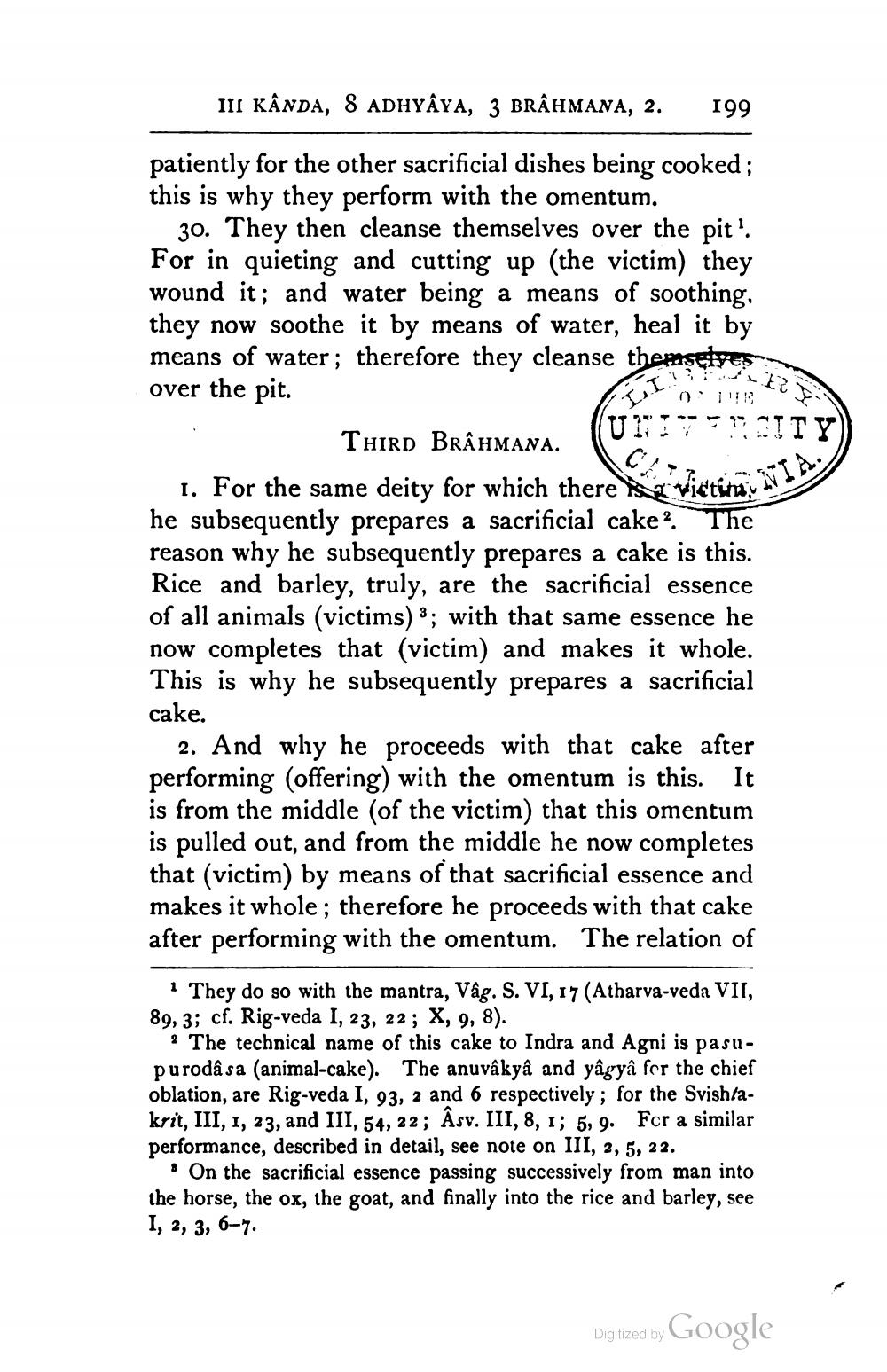________________
III KÂNDA, 8 ADHYÂYA, 3 BRÂHMANA, 2.
199
TV
patiently for the other sacrificial dishes being cooked; this is why they perform with the omentum.
30. They then cleanse themselves over the pit'. For in quieting and cutting up (the victim) they wound it; and water being a means of soothing, they now soothe it by means of water, heal it by means of water; therefore they cleanse themselves over the pit.
Third BRÂHMANA. ( 1. For the same deity for which there a vietina by he subsequently prepares a sacrificial cake? The reason why he subsequently prepares a cake is this. Rice and barley, truly, are the sacrificial essence of all animals (victims) 3; with that same essence he now completes that (victim) and makes it whole. This is why he subsequently prepares a sacrificial cake.
2. And why he proceeds with that cake after performing (offering) with the omentum is this. It is from the middle (of the victim) that this omentum is pulled out, and from the middle he now completes that (victim) by means of that sacrificial essence and makes it whole; therefore he proceeds with that cake after performing with the omentum. The relation of
1 They do so with the mantra, Vâg. S. VI, 17 (Atharva-veda VII, 89, 3; cf. Rig-veda I, 23, 22; X, 9, 8).
2 The technical name of this cake to Indra and Agni is pasupurodâ sa (animal-cake). The anuvâkyâ and yâgyâ for the chief oblation, are Rig-veda I, 93, 2 and 6 respectively; for the Svishtakrit, III, 1, 23, and III, 54, 22; Âsv. III, 8, 1; 5, 9. For a similar performance, described in detail, see note on III, 2, 5, 22.
: On the sacrificial essence passing successively from man into the horse, the ox, the goat, and finally into the rice and barley, see 1, 2, 3, 6–7.
Digitized by Google




